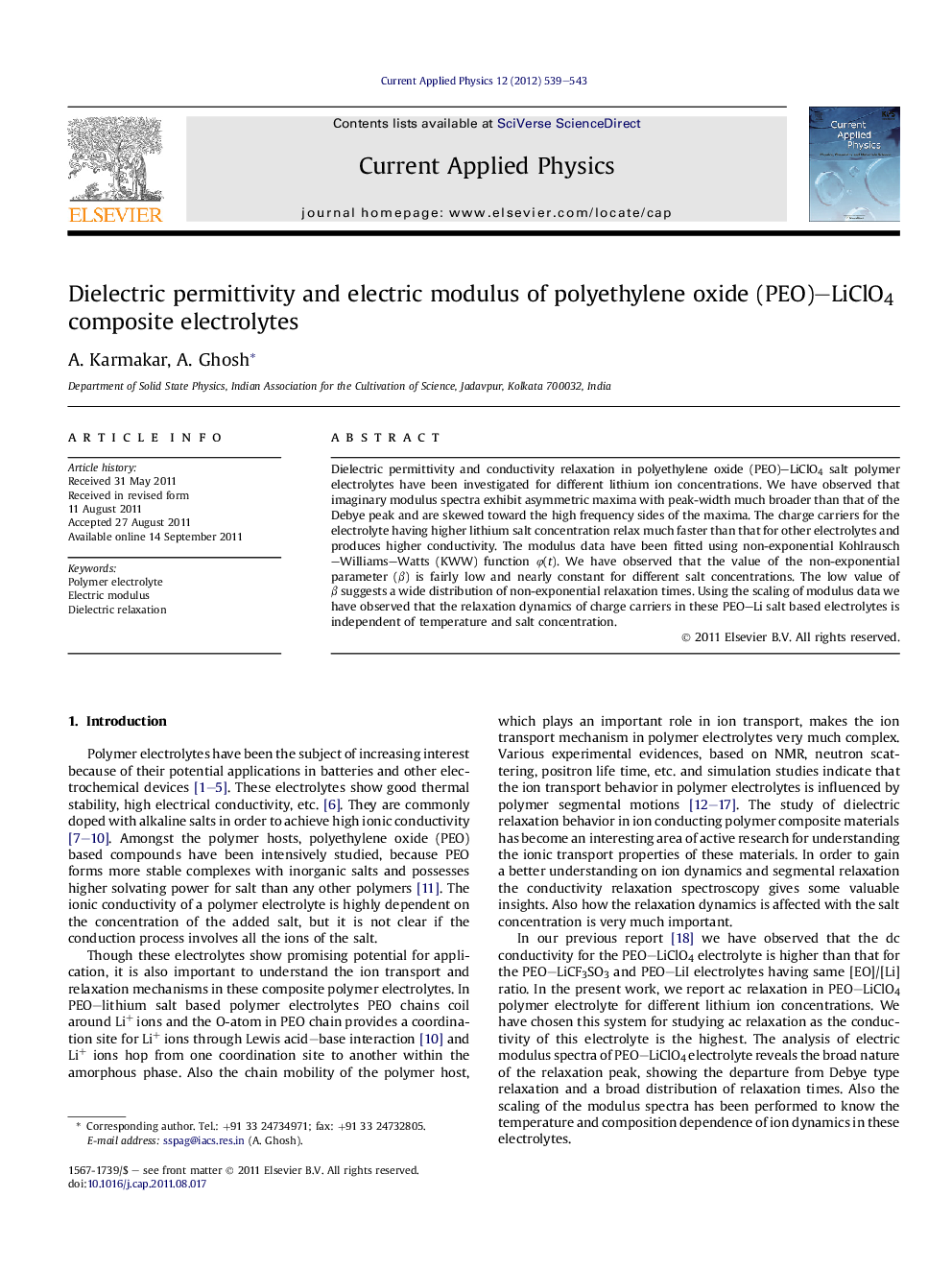| کد مقاله | کد نشریه | سال انتشار | مقاله انگلیسی | نسخه تمام متن |
|---|---|---|---|---|
| 1787088 | 1023430 | 2012 | 5 صفحه PDF | دانلود رایگان |

Dielectric permittivity and conductivity relaxation in polyethylene oxide (PEO)–LiClO4 salt polymer electrolytes have been investigated for different lithium ion concentrations. We have observed that imaginary modulus spectra exhibit asymmetric maxima with peak-width much broader than that of the Debye peak and are skewed toward the high frequency sides of the maxima. The charge carriers for the electrolyte having higher lithium salt concentration relax much faster than that for other electrolytes and produces higher conductivity. The modulus data have been fitted using non-exponential Kohlrausch–Williams–Watts (KWW) function φ(t). We have observed that the value of the non-exponential parameter (β) is fairly low and nearly constant for different salt concentrations. The low value of β suggests a wide distribution of non-exponential relaxation times. Using the scaling of modulus data we have observed that the relaxation dynamics of charge carriers in these PEO–Li salt based electrolytes is independent of temperature and salt concentration.
► Dielectric permittivity and conductivity relaxation in PEO–LiClO4 electrolytes.
► Transport of ions is due to hopping mechanism coupled with segmental motion.
► Ionic conductivity is proportional to most probable relaxation frequency.
► Relaxation mechanism is independent of salt concentration and temperature.
Journal: Current Applied Physics - Volume 12, Issue 2, March 2012, Pages 539–543